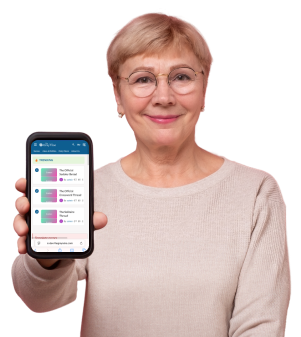Protect yourself on your next trip: What you need to know about carbon monoxide detectors
By
Veronica E.
- Replies 0
Carbon monoxide—often referred to as the silent killer—might not be something you think about often, but it’s a threat that could be lurking without warning.
In fact, recent tragedies, like the heartbreaking loss of Miller Gardner, the son of New York Yankees outfielder Brett Gardner, from carbon monoxide poisoning, have brought this invisible and odorless danger into the spotlight.
Whether you're traveling or at home, it's crucial to understand how to protect yourself from this deadly gas, especially when you’re away from the safety of your own home.
Every year, more than 400 Americans die from accidental carbon monoxide (CO) poisoning, and thousands more are rushed to emergency rooms.
Over the past two decades, there have been over 4,000 incidents of CO poisoning in hotels, motels, and resorts alone.
With numbers like these, it's clear that this is an issue we can’t ignore.

The Patchwork of Protection
When booking travel accommodations through popular platforms like Airbnb or VRBO, you may come across listings that proudly mention whether a carbon monoxide detector is provided.
Unfortunately, not all rentals follow this guideline, which often boils down to the varying safety laws across states.
While Airbnb encourages hosts to equip their properties with both smoke and CO detectors, travelers must remain vigilant to protect themselves.
The Portable Solution
One practical recommendation comes from Sean Malloy, field chief of the Evanston Fire Department.
He suggests bringing your own portable CO detector.
“Once you go into your Airbnb, plug it into the wall, and it’ll beep a couple of times to let you know it’s ready and working,” Malloy shared.
For domestic travel, these detectors are not only affordable but highly effective, priced between $20 to $35.
For international travelers, battery-operated models are a great choice, typically costing between $50 and $60.
Also read: Protect yourself from invisible danger: Urgent recall linked to fatal carbon monoxide poisoning!
Optimal Placement for Protection
According to the US Environmental Protection Agency (EPA), the best place for a CO detector is near sleeping areas to ensure you’ll hear the alarm in case of an emergency.
"Make sure the alarm is loud enough to wake you up," the EPA recommends.
Also read: Hidden danger: The silent threat in your home that’s taken hundreds of lives
Taking Action for Safety
Before heading out on your next trip, take the necessary steps to protect yourself:
As part of The GrayVine community, you've likely had your fair share of travel experiences, and over time, it’s clear that the world has become more complex.
It’s crucial to stay informed and aware, especially when it comes to unseen threats like carbon monoxide.
Whether you're staying in a luxurious hotel or a modest rental, CO poisoning is a risk that can affect anyone.
Read next: Are you at risk? Daily exposure to this common hazard could spark Parkinson’s disease

Have you ever thought about the risks of carbon monoxide while traveling? Do you have any advice for staying safe, or have you had experiences with CO detectors you’d like to share? Your insights could help others stay protected. Let’s share our knowledge and keep each other safe!
In fact, recent tragedies, like the heartbreaking loss of Miller Gardner, the son of New York Yankees outfielder Brett Gardner, from carbon monoxide poisoning, have brought this invisible and odorless danger into the spotlight.
Whether you're traveling or at home, it's crucial to understand how to protect yourself from this deadly gas, especially when you’re away from the safety of your own home.
Every year, more than 400 Americans die from accidental carbon monoxide (CO) poisoning, and thousands more are rushed to emergency rooms.
Over the past two decades, there have been over 4,000 incidents of CO poisoning in hotels, motels, and resorts alone.
With numbers like these, it's clear that this is an issue we can’t ignore.

Protect yourself and your loved ones from hidden dangers—safety should always come first. Image Source: YouTube / CBC News.
The Patchwork of Protection
When booking travel accommodations through popular platforms like Airbnb or VRBO, you may come across listings that proudly mention whether a carbon monoxide detector is provided.
Unfortunately, not all rentals follow this guideline, which often boils down to the varying safety laws across states.
While Airbnb encourages hosts to equip their properties with both smoke and CO detectors, travelers must remain vigilant to protect themselves.
The Portable Solution
One practical recommendation comes from Sean Malloy, field chief of the Evanston Fire Department.
He suggests bringing your own portable CO detector.
“Once you go into your Airbnb, plug it into the wall, and it’ll beep a couple of times to let you know it’s ready and working,” Malloy shared.
For domestic travel, these detectors are not only affordable but highly effective, priced between $20 to $35.
For international travelers, battery-operated models are a great choice, typically costing between $50 and $60.
Also read: Protect yourself from invisible danger: Urgent recall linked to fatal carbon monoxide poisoning!
Optimal Placement for Protection
According to the US Environmental Protection Agency (EPA), the best place for a CO detector is near sleeping areas to ensure you’ll hear the alarm in case of an emergency.
"Make sure the alarm is loud enough to wake you up," the EPA recommends.
Also read: Hidden danger: The silent threat in your home that’s taken hundreds of lives
Taking Action for Safety
Before heading out on your next trip, take the necessary steps to protect yourself:
- Invest in a portable CO detector and make sure it’s working before you leave.
- Learn the symptoms of carbon monoxide poisoning: headache, dizziness, nausea, chest pain, and confusion.
- Once at your accommodation, check for existing CO detectors and install your portable one close to the sleeping area.
- Ensure the detector is functioning by checking the batteries regularly.
As part of The GrayVine community, you've likely had your fair share of travel experiences, and over time, it’s clear that the world has become more complex.
It’s crucial to stay informed and aware, especially when it comes to unseen threats like carbon monoxide.
Whether you're staying in a luxurious hotel or a modest rental, CO poisoning is a risk that can affect anyone.
Read next: Are you at risk? Daily exposure to this common hazard could spark Parkinson’s disease
Key Takeaways
- Miller Gardner's death due to carbon monoxide poisoning has highlighted the risks of CO exposure, especially while traveling.
- Portable carbon monoxide detectors are being recommended, particularly for travelers staying in accommodations without built-in detectors.
- Airbnb is undertaking an initiative to install smoke and carbon monoxide alarms in all listings, offering to cover the cost for active hosts.
- When using a portable carbon monoxide detector, it is advised to place it near the sleeping area to ensure the alarm can awaken occupants in case of carbon monoxide detection.
Have you ever thought about the risks of carbon monoxide while traveling? Do you have any advice for staying safe, or have you had experiences with CO detectors you’d like to share? Your insights could help others stay protected. Let’s share our knowledge and keep each other safe!






